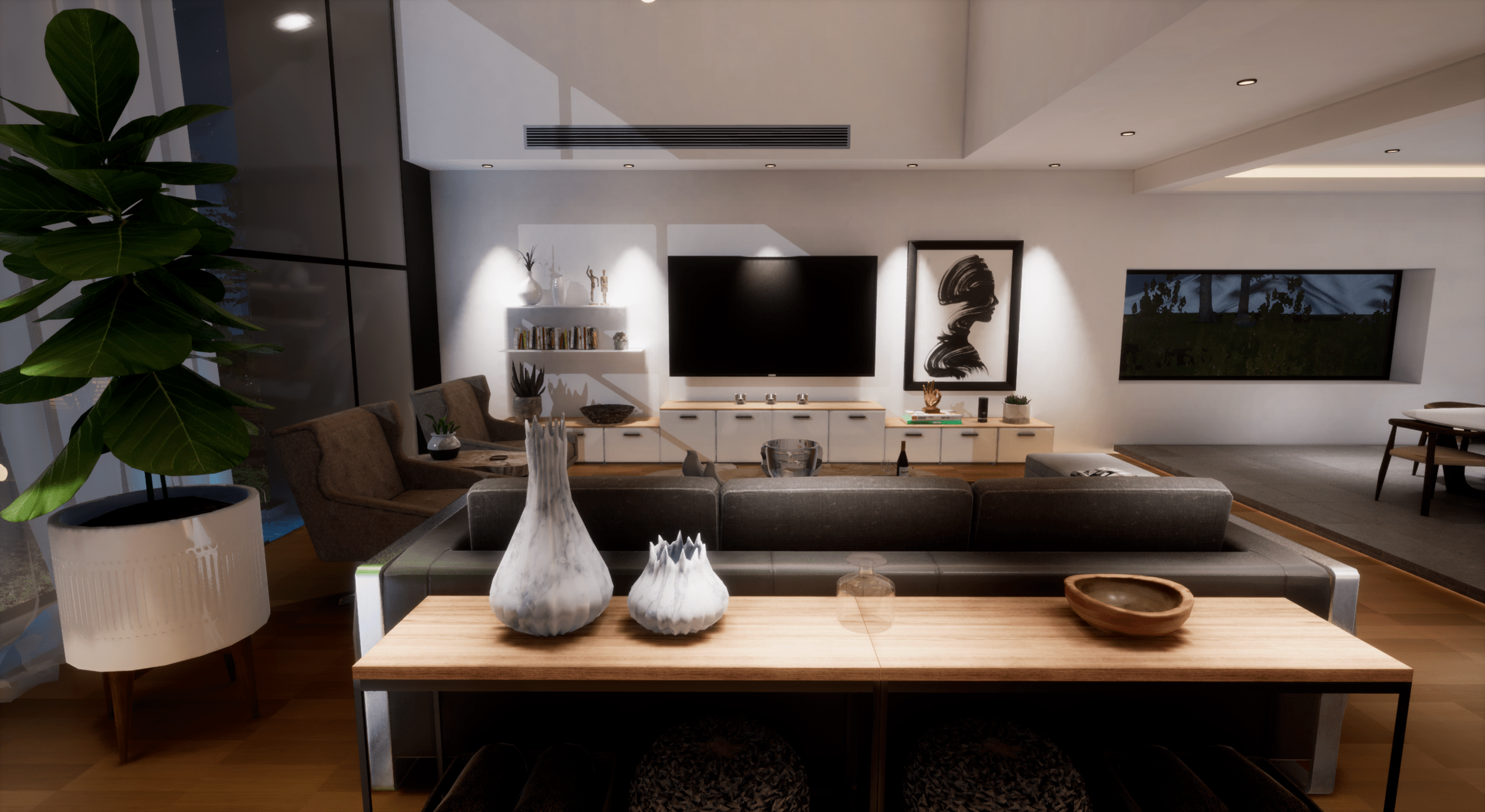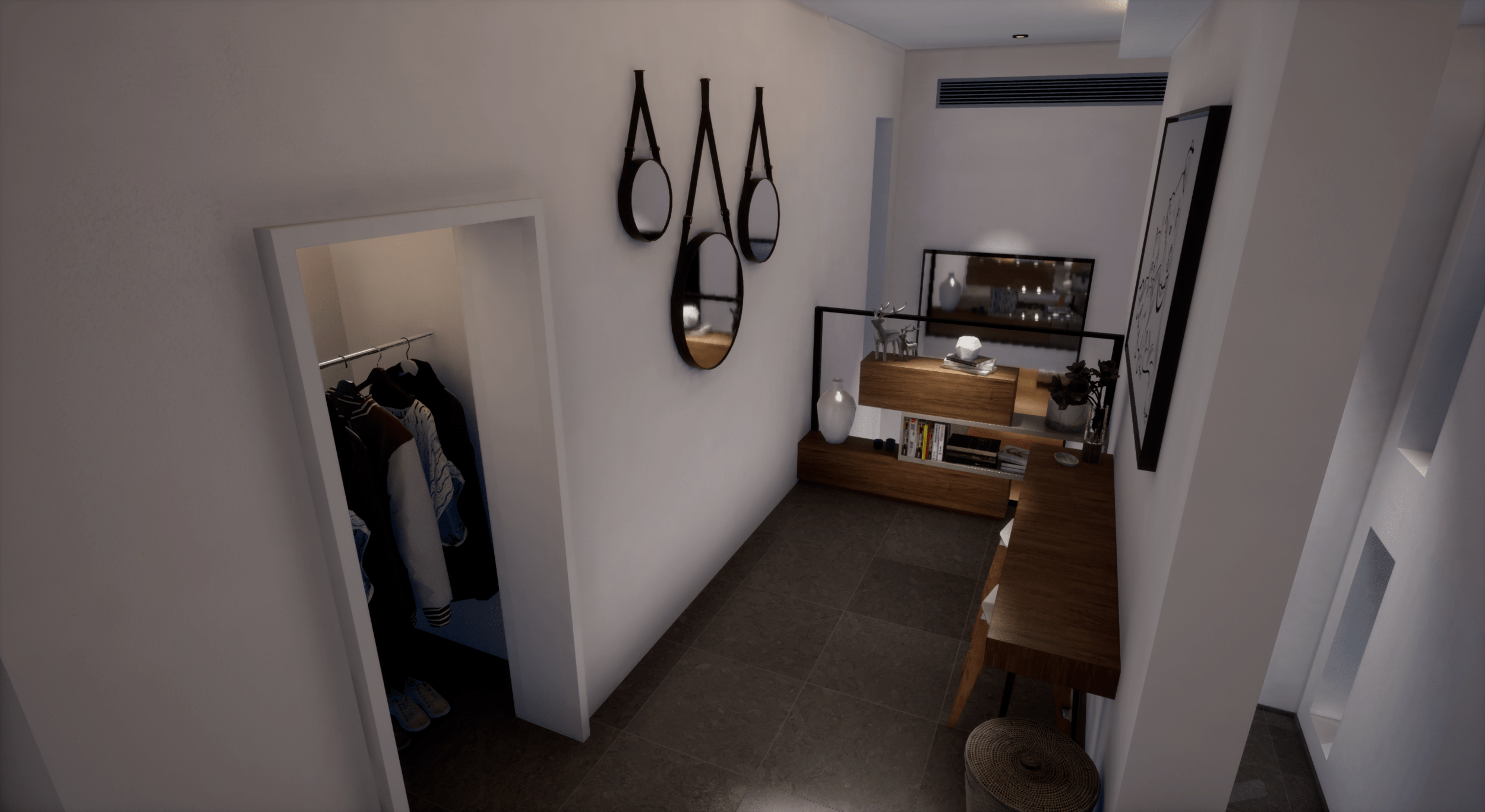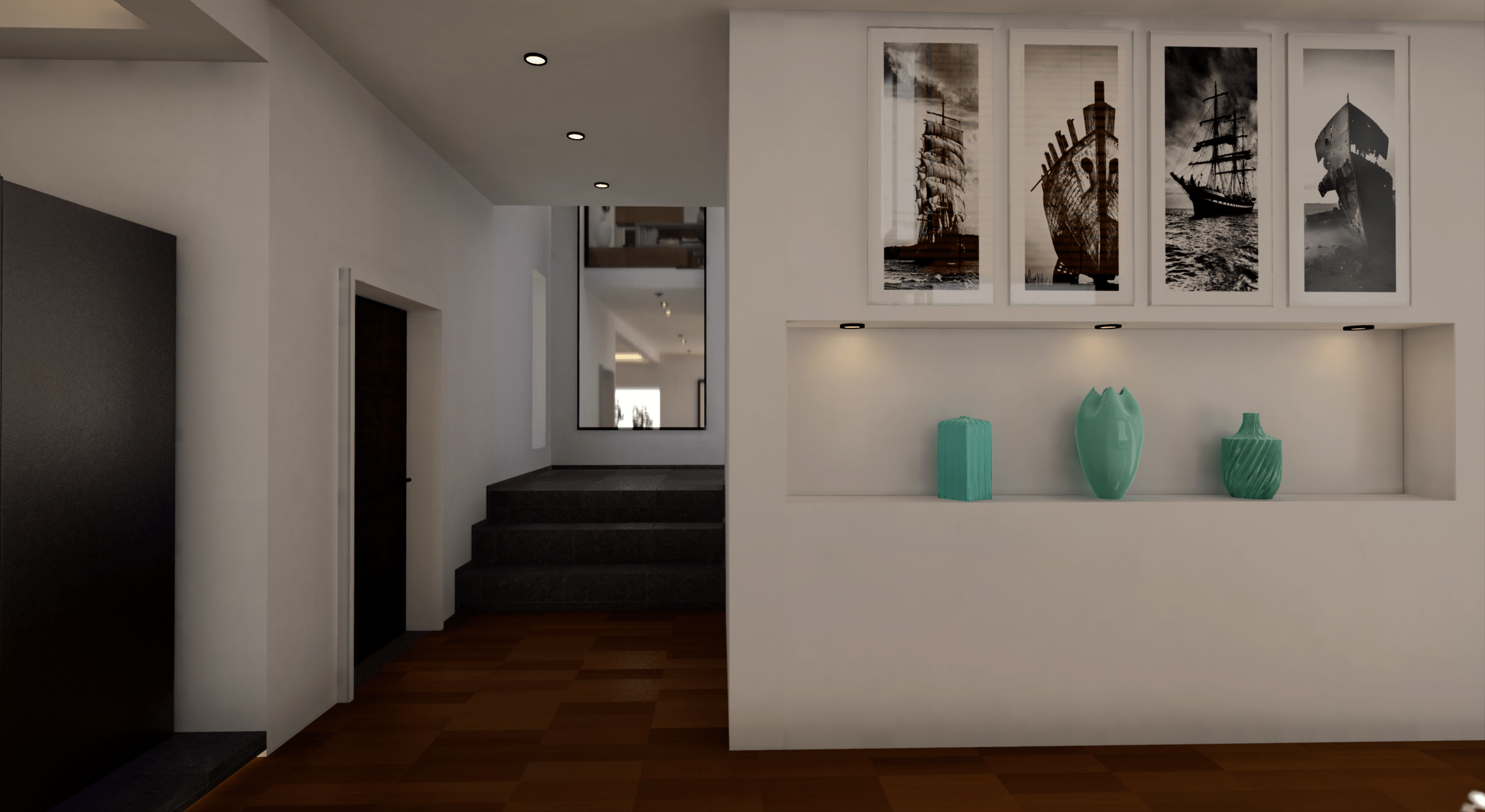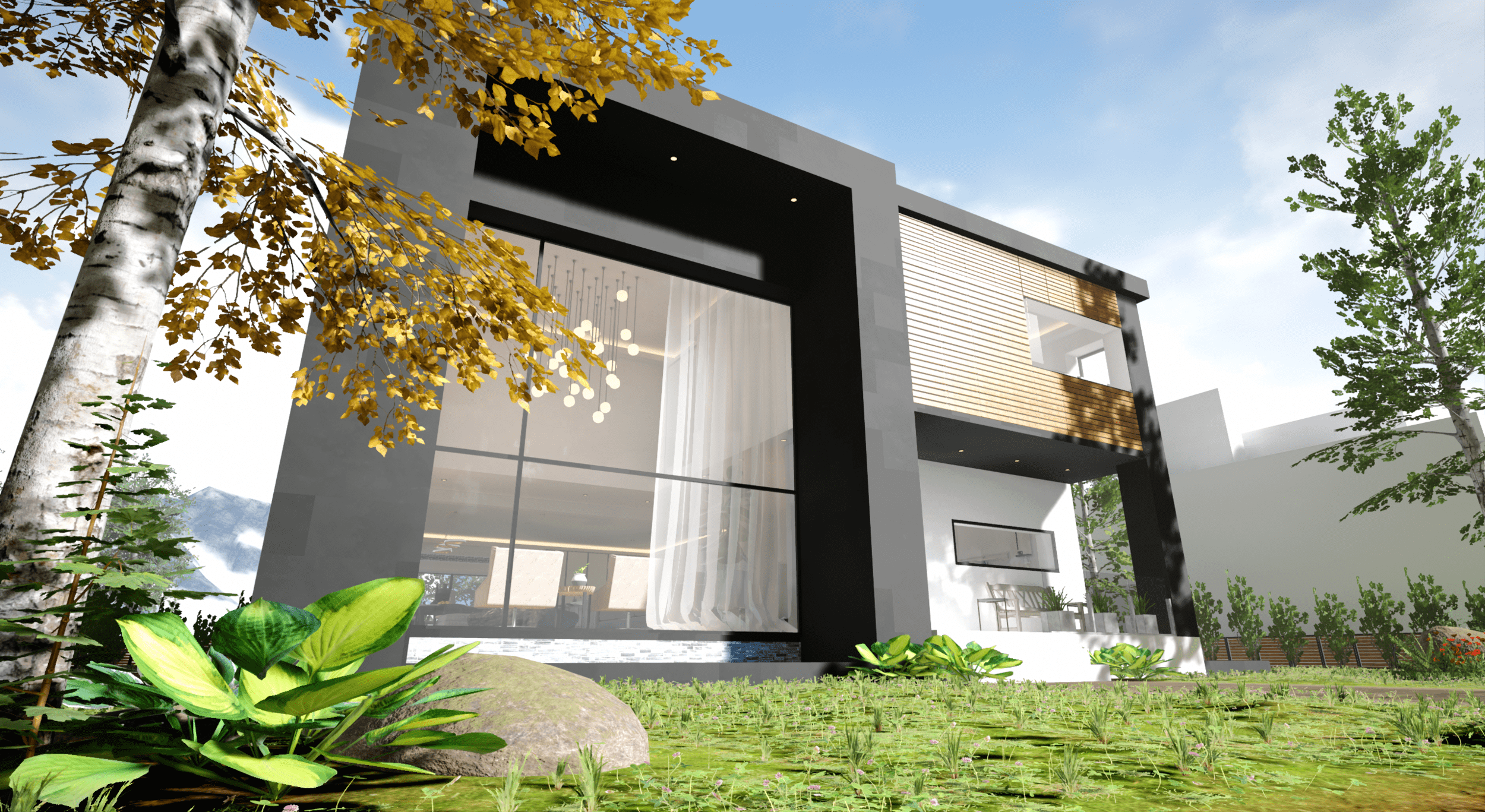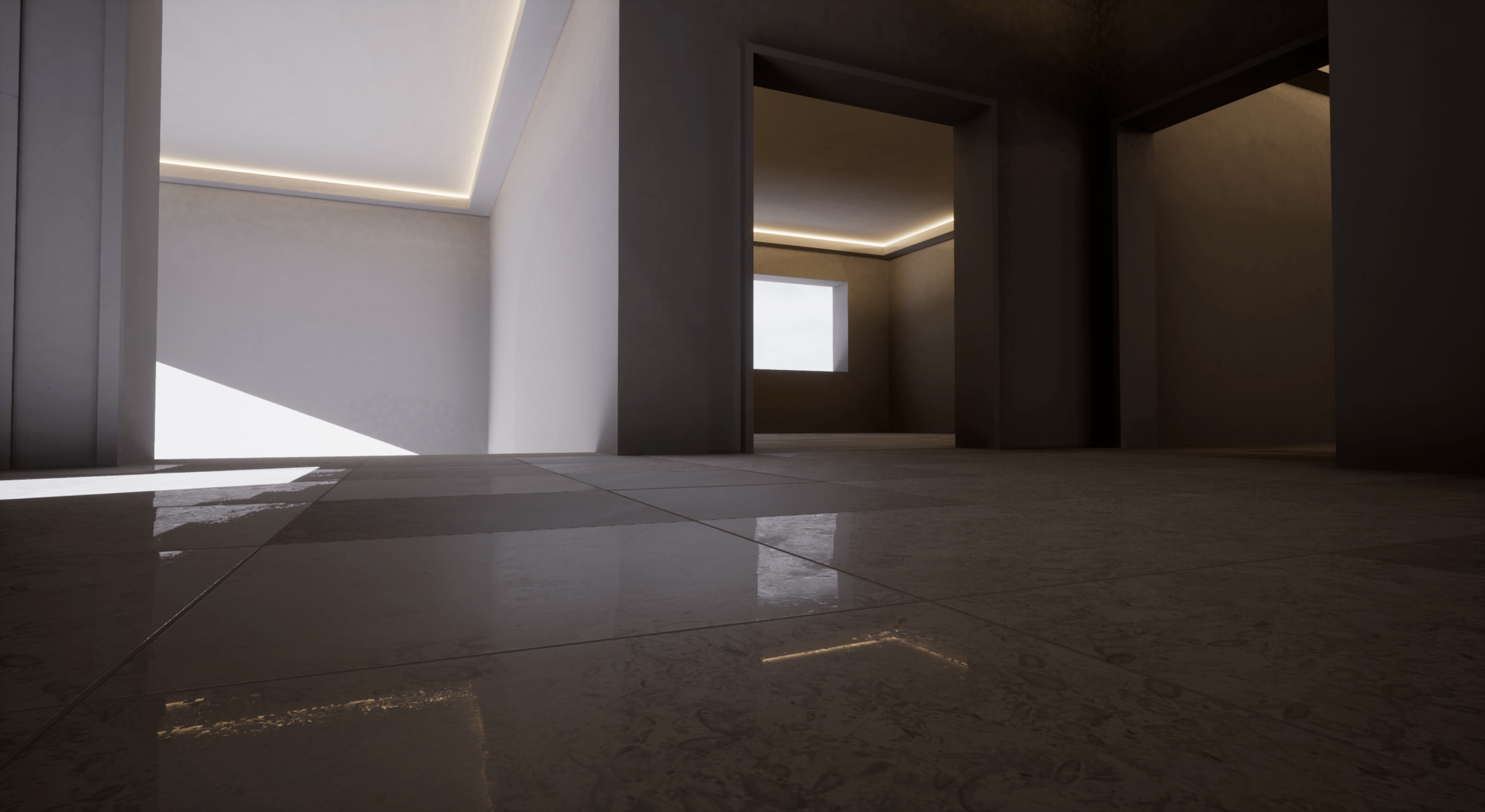
Archvis Home
Role
Modeling, Texturing, Scripting, Lighting
Project Status
Not Shipped
Software
Unreal Engine 4, Maya, Quixel
A modern home I built to test my understanding of the lighting system and some optimization techniques in Unreal Engine 4. In this project, the player can walk around the home in first person and change between day/night lighting.
Before
After
Process
I modeled the floor plan in Maya and separated each component of the house into various layers. This would later help me assemble the house in Unreal Engine and also enable more flexibility while working with the materials
I created two UV sets for each model, one for the textures and the other for the lightmaps. Both were laid out separately for optimization while maintaining consistent texel densities which I would later tune in Unreal Engine
I assigned material IDs to surfaces with shared properties. The color coding served two purposes, the first is to help identify which surface the material is affecting and the other is to ensure similar surfaces have similar appearances
I created a Master Material in Unreal Engine that served as the parent for all other surfaces. This material tiles and randomizes UV coordinates to achieve a natural look in my scene. I exposed variables so that I can edit the look in the Material Instances easily.
Modeling
UVs
Material IDs
Shaders
Interactions
Features I implemented to bring the home to life. These interactions include time of day with ambience associated with both day and night, interactable doors and optimized reflections (no RTX)
I use a mix of reflection captures for distant reflections and planer reflections for closeups. The planer reflections are activated when a player enters a trigger and apply detailed reflections to a designated surface to save on performance.
I use timelines to smoothly animate opening doors and windows. Doors rotate around hinge and have an adjustable angle. The doors will also open in the direction the player is heading to make the experience more seamless. Windows will simply slide from one location to another when the player enters a trigger.
I created the level once and then baked the different lighting scenarios. The player can toggle the different lighting scenarios based on the time of day they want to explore. Night time has a few additions to improve the lighting and ambiance.
Toggling the time of day will change aspects of the home including audio and models. during the day time players can hear birds and louder ambience compared to night time where players can hear crickets, more pronounced ambience from the pool and see additional decorative lights to illuminate the garden.
Optimized Reflections
Interactable Doors / Windows
Time of day
Ambiance
Purpose
Notes:
How materials and indirect lights affect each other and contribute to the overall look of the scene
How to create flexible, customizable and optimized materials that are randomized per tile
Level streaming and lighting scenarios workflow
how to optimize models, textures, lighting and reflections to run on lower end hardware
A personal case study to further understand lighting and materials. As well as a challenge to create a realistic and interactive scene that was optimized to run on lower end hardware.



